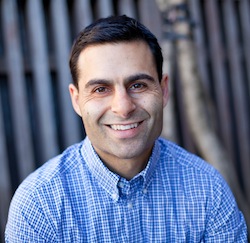 A while back I noticed that an organization called Newsbound posted a job opening for an "Explainer-in-Chief", a title I love to see. Curious, I followed Newsbound and eventually met Patrick Sharma, the person who now fills that role. He's been kind enough to answer a few questions and share a remarkable format the company is using to package explanations.
A while back I noticed that an organization called Newsbound posted a job opening for an "Explainer-in-Chief", a title I love to see. Curious, I followed Newsbound and eventually met Patrick Sharma, the person who now fills that role. He's been kind enough to answer a few questions and share a remarkable format the company is using to package explanations.
1. Tell me about Newsbound and your role there. What's the company's mission and story?
Newsbound is a San Francisco-based digital media company that focuses on providing backstory and explanation for ongoing news stories, such as the war in Afghanistan and the federal budget debate. We were founded back in 2011 by Josh Kalven. Josh has a background in political media, and during his previous gig (editing Progress Illinois) was frustrated by the lack of contextual information in most newspaper stories. Newsbound is an attempt to help solve this problem, and over the past few months we've been experimenting with different ways of delivering background information to news readers.
As Newsbound's "explainer-in-chief," I help develop our content. I figure out what topics we break down and how to do it. In addition to Josh, I work with an extremely talented team of graphic designers (Tabriz Ghazi and Katie Tonkovich) to get our pieces ready for publication.
2. How is explanatory journalism different than other kinds of journalism?
Explanatory journalists don't break the news: we break it down. Most of what constitutes the "news" is focused on reporting the latest development in a particular story. Explanatory journalism, by contrast, takes issues that pop up in the news and makes them understandable for readers. Newspapers, radio, and television reporters often assume that news consumers understand the basics of a story. But the truth is that many people don't have that knowledge and, as a result, decide to tune out. This is a problem, because with a little bit of explanation, complex and seemingly obscure topics -- such as the federal budget debate or the crisis in Syria -- can be made understandable. When people have a basic understanding of an issue, they are much more likely to be engaged and informed. In other words, just a little bit of up front explanation can empower more people to consume the news.
3. Do you have a process or best practices for explaining? What makes your explanations different?
I'm still finding my voice as an explanatory journalist, but there are a few key things that we try to do in our explanations. The first is to focus the piece around a particular question rather than a general topic. (So our piece on political conventions is titled, "How Conventions Became Campaign Commercials," rather than "Political Conventions.") I find that this helps focus the piece and gives people a more accessible entry into the story. It's also a lot less boring and encyclopedia-like. Another thing we try to do is to give people a sense of where we will be going with our explanation. At the outset we state where we're going in the piece, how we are going to get there, and what you as a reader will get out of the process.
Our explanations are different than most of what you'll find on the internet in that they're published in a graphic-rich, interactive slideshow format. We call this the "stack." It's designed is to lead readers through a dense and unfamiliar topic without overwhelming or intimidating them along the way. Our overarching design goal is to encourage focus and cut out the distractions that have become so common in the current news environment.
So far, we've found that the "stack" format, even in its current alpha version, is an extremely effective vehicle for explanation. More than half of the users who start our pieces finish them, and a sizeable number go on to share them via Facebook or Twitter. We believe that these metrics will climb even higher as we refine both the reading experience and our own explanations.
Here is an example of the stack format Patrick mentions. I think it's a remarkable and effective way to package and present information and explanations:
Thanks to Patrick for taking the time. You can follow him on Twitter @Patrick_Sharma and find more explainers on the Newsbound blog.